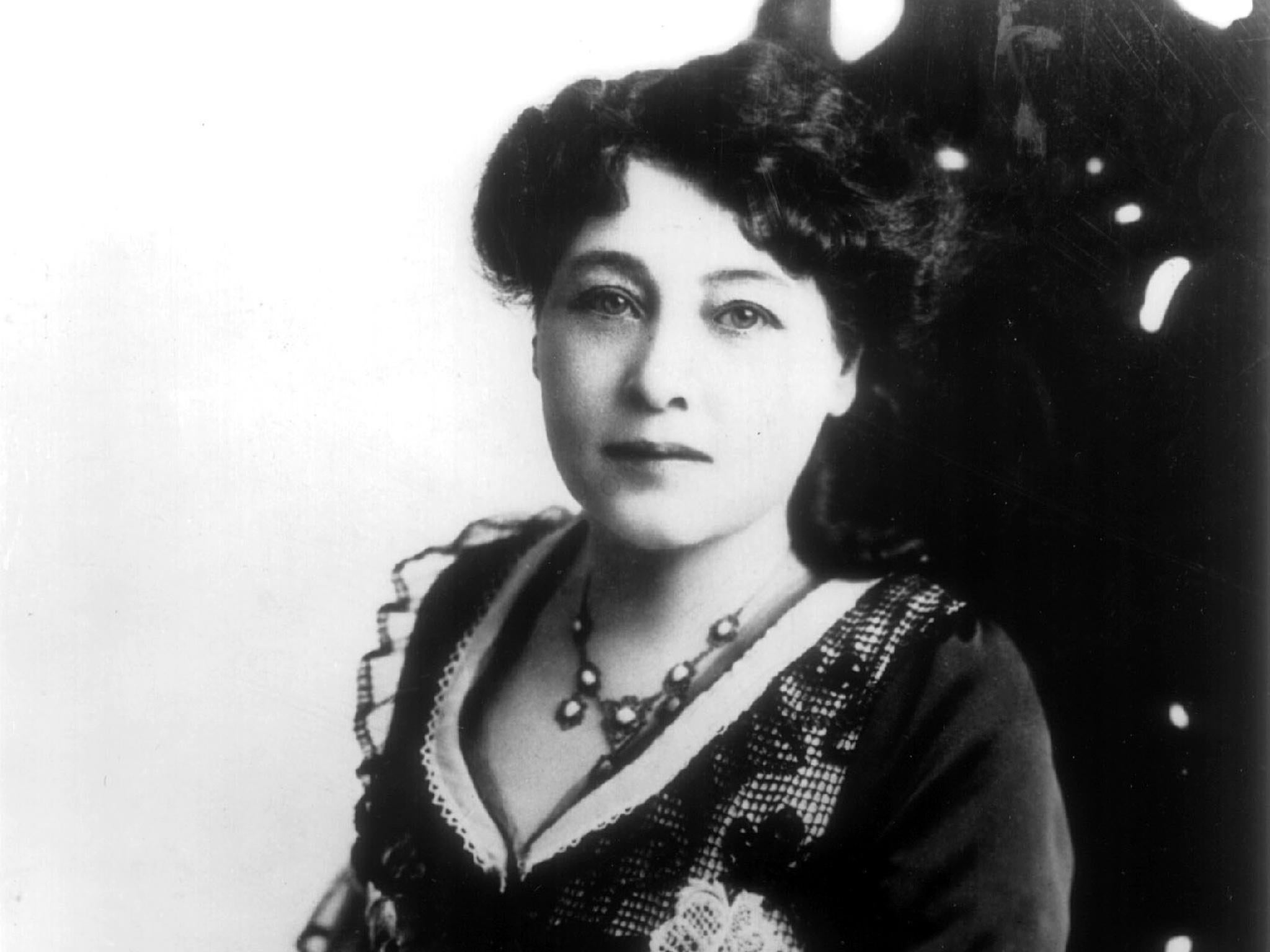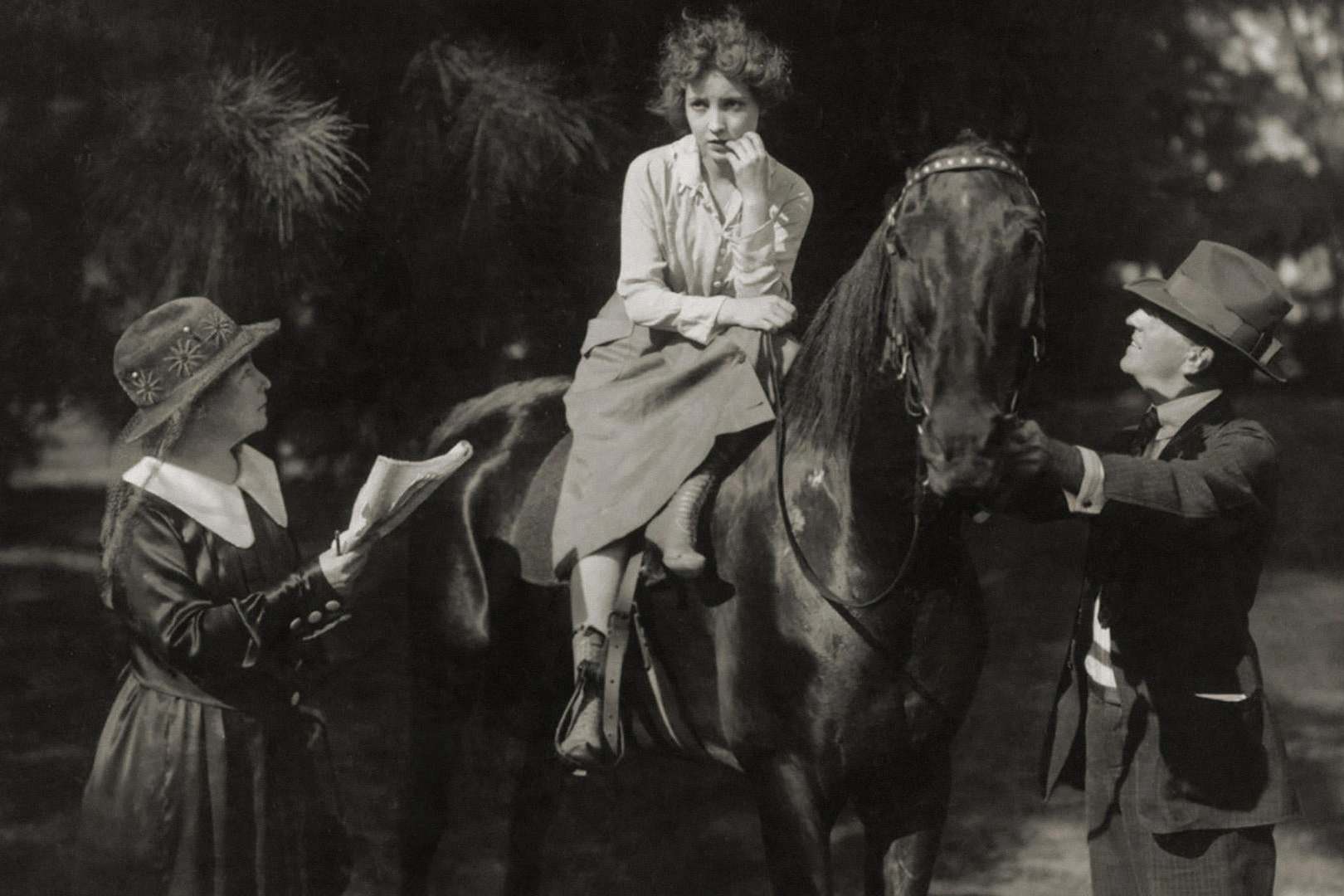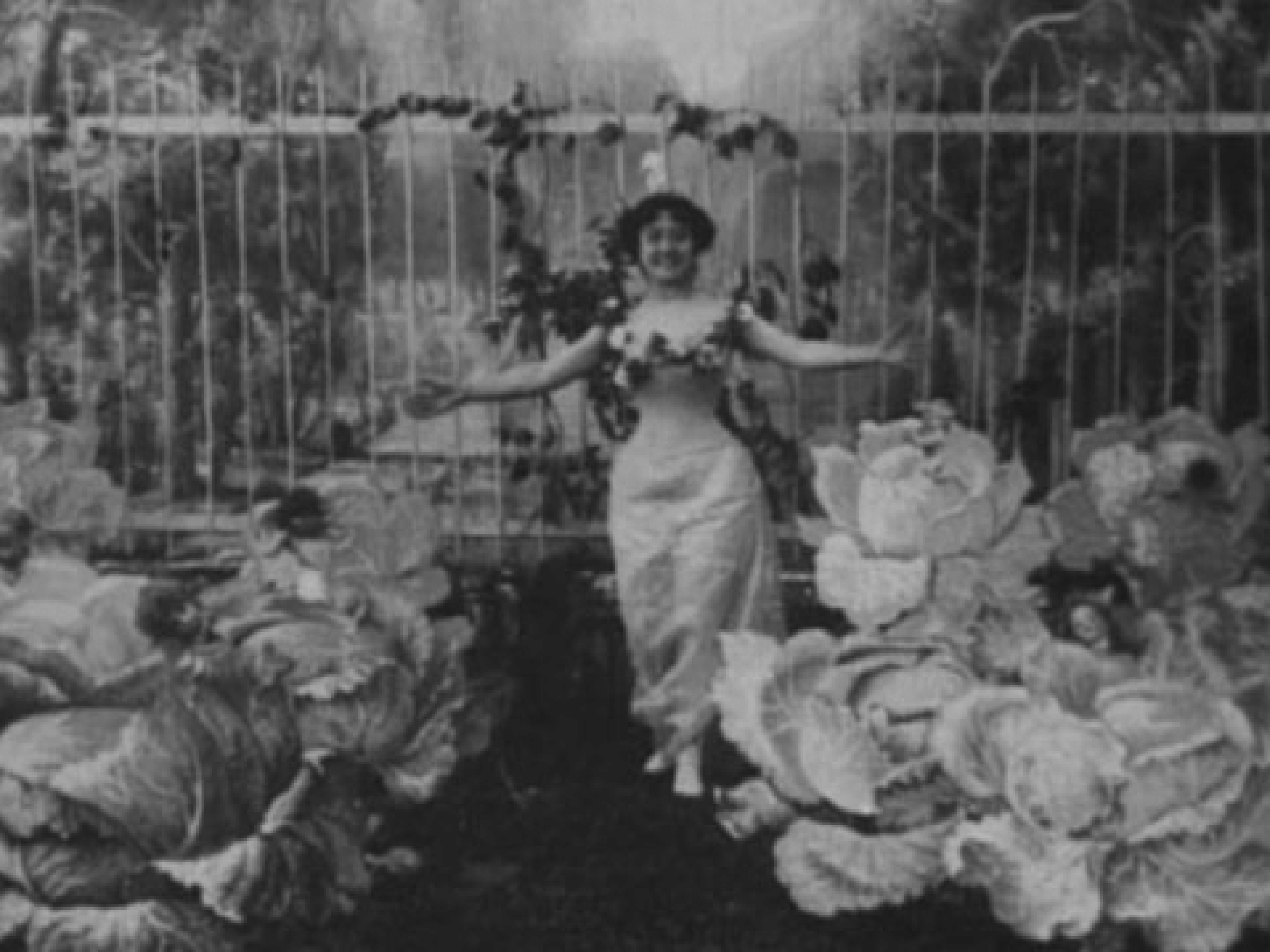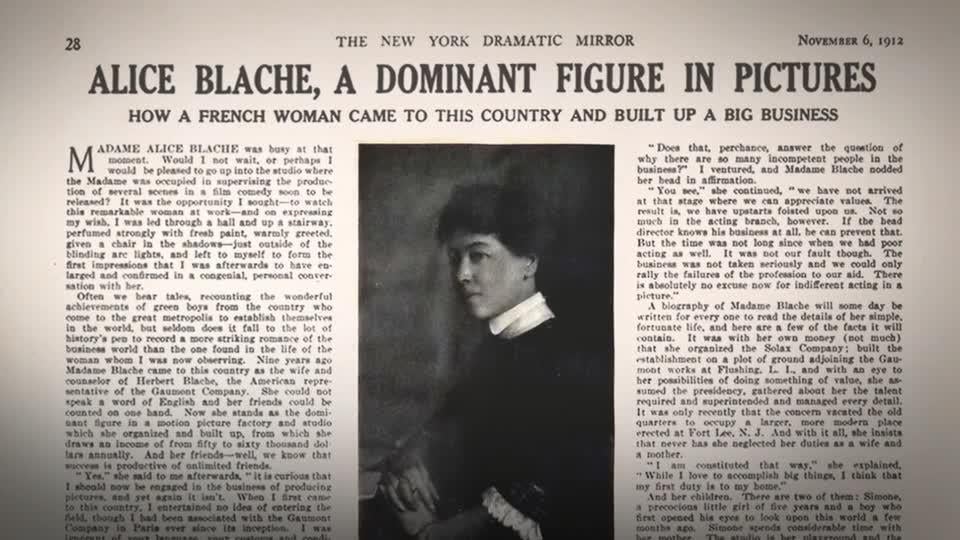Alice Guy Blache: Rediscovering the first great female filmmaker
‘My youth, my inexperience, my sex,’ the French cineaste wrote of her start in the industry, ‘all conspired against me’

Your support helps us to tell the story
From reproductive rights to climate change to Big Tech, The Independent is on the ground when the story is developing. Whether it's investigating the financials of Elon Musk's pro-Trump PAC or producing our latest documentary, 'The A Word', which shines a light on the American women fighting for reproductive rights, we know how important it is to parse out the facts from the messaging.
At such a critical moment in US history, we need reporters on the ground. Your donation allows us to keep sending journalists to speak to both sides of the story.
The Independent is trusted by Americans across the entire political spectrum. And unlike many other quality news outlets, we choose not to lock Americans out of our reporting and analysis with paywalls. We believe quality journalism should be available to everyone, paid for by those who can afford it.
Your support makes all the difference.In 1911, The Moving Picture News wrote that Alice Guy Blache, the first female filmmaker in history, was a “fine example of what a woman can do if given a square chance in life”.
Blache had already founded a successful film company in the United States by the time the article was published, announcing a new studio she was opening in New Jersey. She soon built that studio, adding to her triumphs. Cinema was Blache’s passion – she called it her Prince Charming – and it took her across continents and centuries in a life shaped both by soaring achievements and by some of the same struggles that women filmmakers face today.
She was aware of her singularity.
“I have produced some of the biggest productions ever released by a motion picture company,” Blache told the entertainment weekly The New York Clipper in 1912. “I am the only woman who is directing companies before the camera.”
She made – directed, produced or supervised (often doing triple duty) – about 1,000 films, many of them short, the standard at the time.
She would later leave the industry at a time when her life was marred by personal and professional disappointments, then spend years trying to claim her place in the very history that she had helped make.
Like other trailblazing women from cinema’s formative years, Blache has been discovered, somehow overlooked and rediscovered anew. Only now, largely because of the feminist film scholars who are writing women back into history, does her place seem secure.
Blache got her start in films when she was 22 and working as a secretary in Paris for Leon Gaumont, an inventor who had begun manufacturing motion picture cameras. To demonstrate them to clients, his company made short films that Blache thought could be better.
“I had read a good deal,” she wrote in The Memoirs of Alice Guy Blache, which was ushered into publication posthumously in 1976 by historian Anthony Slide. And she had done some “amateur theatricals”.

She asked Gaumont if she could film a few scenes.

“It seems like a silly, girlish thing to do,” Gaumont told her, Blache recalled many decades later in a French television interview, “but you can try if you want. On one condition: that your office work does not suffer.”
Armed with a cameraman, an actress and a painted backdrop, she made La Fee aux Choux (The Cabbage Fairy) in 1896, her first film. A pantomimed one-minute charmer, it shows a young woman who, with a smile and a bosom wreathed in flowers, plucks squalling naked babies from a cabbage patch constructed out of wood. Some historians believe that Blache’s inaugural effort was Sage-Femme de Premiere Classe (First Class Midwife), her 1902 remake about a young couple who go shopping for a baby. (Blache played the husband.)
Gaumont soon made Blache the head of film production at his company, where she produced and supervised hundreds of films, helped create an organised studio system years before Hollywood was a company town and trained luminaries of the art like Louis Feuillade. When she moved to the United States, where she resumed her film career, her time at Gaumont was touted in profiles. In 1912, the trade journal The Movie Picture World, wrote: “She inaugurated the presentation of little plays on the screen by that company some 16 or 17 years ago.”
Alice Ida Antoinette Guy was born in Saint-Mande, on the eastern edge of Paris, on 1 July 1873. Her parents, Marie and Emile Guy, were French but lived in Chile, where her father was a bookseller; her mother returned to France for Blache’s birth and then left the child with a grandmother. Three years later, her mother returned for Blache, and they sailed to Chile. While passing through the Strait of Magellan, near Chile’s southern tip, as she recalled in her memoir, she conjured up fairies and beasts on walls of ice – an early, whimsical prelude to her screen reveries.
Assorted tragedies in Chile followed, and the Guys eventually returned to France, but over time the family disintegrated, leaving Blache to support her mother.
Much of Blache’s early years seemed to prepare her for a life in cinema, filled as they were with adventures, deprivations and moments of fortitude. In her first secretarial position, in an all-male factory, she recalled, she boldly stood up to a sexual harasser.
“My youth, my inexperience, my sex,” Blaché wrote of her entrance into cinema, “all conspired against me.” But she was hardworking and tenacious, and would prove to be prolific.
In 1894, she talked Gaumont, then the second-in-command at a photography company, into hiring her. Not long after, Gaumont formed his own company and Blache became a pioneer, making films that were coloured by hand and others that used a pioneering sound system, which synced visuals with prerecorded wax cylinders. Blache can be seen in one clip starting a phonograph while she directs both the cast and the crew. Among her Gaumont titles are La Femme Collante, a risque charmer about a maid with an amusingly sticky tongue, and Le Matelas Alcoolique about a peripatetic mattress with a drunken man sewn into it.
In 1907, she married Herbert Blache, another Gaumont employee, and resigned as head of film production to accompany him to the United States, where he was sent to promote Gaumont’s sync-sound film system. The undertaking was a bust. But in 1910, two years after giving birth to their daughter, Simone, Blache formed the Solax Company and began making her own movies. She was so successful that in 1912 – the year she gave birth to their son, Reginald – Blache built her own state-of-the-art studio in Fort Lee, New Jersey, then a bustling film town.

She kept up a heroic pace at Solax. She would jump in her car or on a horse to scout locations, including an orphanage, an opium parlour, night court and Sing Sing prison, where she declined the invitation to witness an execution. She supervised other directors and assistants, oversaw a stock company of adult and child actors, and corralled a menagerie of animal performers, among them rats, lions, panthers and a 600-pound tiger named Princess. On one studio wall she hung a sign that read “Be Natural”.
Her interest in realism as well as performance dovetailed with what her biographer Alison McMahan said was Blache’s greatest achievement. Her films, McMahan said in a phone interview, “focused on the psychological perspective of the central characters”.
Blache told The Clipper in 1912: “I have always impressed upon my associate directors that success comes only to those who give the public what it wants, plus something else. That something else I would call our individuality, if you please.”
Blache expanded her repertoire at Solax with cowboy films like Two Little Rangers, which features a pair of gun-toting heroines, one of them a girl with long curls who backs a villain off a cliff. Whether or not it was feminist by design, the film is feminist by default. Blache wondered if women were ready for the right to vote, but in her actions and in her films she expressed female drives, desires and self-determination.
At Solax, she successfully made the transition to feature filmmaking, creating longer, more narratively complex titles that were well-received, though they also entailed higher production costs and longer preparations. Yet while Blache navigated the shift to features creatively, she didn’t weather the seismic changes affecting the fast-growing movie world, including monopolistic distribution practices. By 1914, she and her husband had joined forces with another enterprise for which they both directed.
The last chapter of Blache’s filmmaking career was marred by setbacks and disappointments both in her new ventures with her husband and as a director for hire. She made The Ocean Waif, a touching romance about an abused young woman and a writer that gives (almost) equal weight to both.
Other films followed, but by the time she directed the well-regarded Her Great Adventure, Blache was struggling with her health, financial difficulties, a broken marriage and continued industry upheaval. She declined to direct a Tarzan movie. In 1922, the Solax studio was auctioned off, and Blache, now divorced, returned to France with her two children.
In France she tried to find film work with no luck. It’s unclear why she didn’t succeed, although by the 1920s, the movies were a big business and no longer as hospitable to women who wanted to make their own films. She sold her books, paintings and other possessions and wrote articles and children’s stories.
She and her daughter, who worked for the American Foreign Service, spent the last years of the Second World War in Switzerland, where Blache began writing her memoir. She also tried to find her films, but most were unavailable and presumed lost. She nevertheless persevered, gave interviews and in time gained some recognition for her pioneering role in cinema.
Blaché wrote of her life: “It is a failure; is it a success? I don’t know.” She died on 24 March 1968, in a nursing home in New Jersey. She was 94.
In 2012, the Fort Lee Film Commission installed a new gravestone for Blache. The original one had noted only her name and the dates of her birth and death. The new memorial states that Alice Guy Blache was the “first woman motion picture director,” the “first woman studio head” and the “president of the Solax Company, Fort Lee, NJ.”
The memorial is also adorned with the Solax logo: an image of the sun rising on a new day.
© New York Times
Join our commenting forum
Join thought-provoking conversations, follow other Independent readers and see their replies
Comments